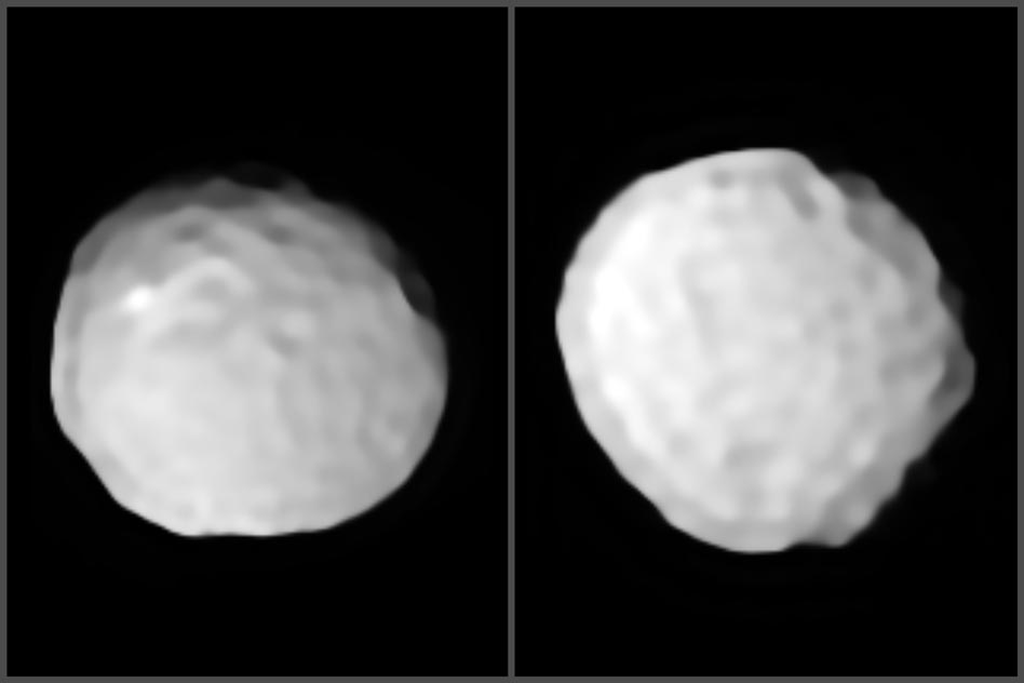
In 1802, Pallas was the second asteroid to be discovered and is the largest main-belt object that has not yet been visited and observed by a spacecraft. Now, in a new paper published in Nature Astronomy, researchers are revealing detailed images of Pallas that show large craters and impact basins on its surface, earning it the nickname the “golf ball asteroid.” Michaël Marsset from MIT’s Department of Earth, Atmospheric and Planetary Sciences and co-authors from 21 research institutions, including Franck Marchis, Senior Planetary Astronomer at the SETI Institute collaborated research.
These new observations of Pallas were performed at the Very Large Telescope (VLT) in Chile using an adaptive optics system called SPHERE (Spectro-Polarimetric High-Contrast Exoplanet Research). Pallas’ orbit is unusual in that it is tilted and does not travel the same elliptical path as most objects in the asteroid belt, so its collisions with other asteroids caused more damage than if it were in the same orbit with them.
“This first detailed images of the Pallas suggest that the asteroid had a violent past,” said Franck Marchis “It survived multiple collisions with small objects and a large one with a 40-km impactor about 1.7 billion years ago. Because we are now able to see the surface of large asteroids in the main-belt, we have access to a fictive book on the history of our solar system. We are in the process of learning how to read it and each page is a surprise to us, including Pallas.”
Based on their observations, the researchers further theorize that Pallas’ bulk density is compatible with a CM chondrite-like body, distinguished by their mineral content and density. They also postulate that a bright spot on its surface may indicate enrichment in salts, although additional research will be necessary to confirm whether or not this is the case.
This material is partially based upon work supported by the National Science Foundation under Grant No. 1743015 https://www.nature.com/articles/s41550-019-1007-5
MIT Press release: http://news.mit.edu/2020/pallas-golf-ball-asteroid-0210





